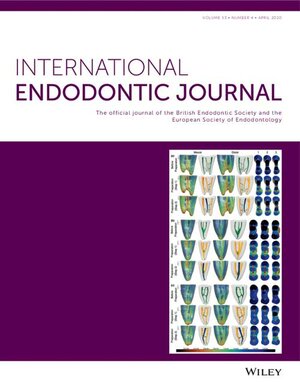Clinical validation of a proposed diagnostic classification for pulpitis
Abstract
Aim
Determine the reliability and clinical validity of the Wolters classification of pulpitis.
Methodology
Prospective diagnostic accuracy study in which patients with pulpitis were included. Based on history, clinical and radiographic examination, participants were categorized into initial, mild, moderate or severe pulpitis based on Wolters classification and received treatment as suggested in the classification. The American Association of Endodontists (AAE) classification was used for comparison. Treatment outcome was evaluated at 12 months. Classification reliability was assessed by measuring the interrater agreement using Fleiss' Kappa. Construct validity was assessed by cluster analysis using an unsupervised machine learning approach. Predictive validity was determined by the association of treatment outcome with the diagnostic category. All statistical analyses were conducted using R v4.3.1; a p-value of <.05 was considered statistically significant.
Results
Ninety-two patients were included in the study. The interrater reliability showed fair agreement for Wolters classification (Kappa (κ) = 0.593, 95% confidence interval (CI): 0.592–0.595), compared with substantial agreement (κ = 0.888, 95% CI: 0.887–0.889) for the AAE classification. Association of Wolters classification with output of unsupervised K-mode cluster analysis showed that the use of a three-category model may improve discrimination of pulpitis subdivided into mild, moderate, and severe categories. The revised classification model demonstrated 100% sensitivity and specificity for accurate discrimination between mild and severe pulpitis and 83% sensitivity and 85.7% specificity for classifying moderate pulpitis. There was no significant difference between these revised diagnostic categories considering treatment outcome, suggesting good predictive validity (p > .05). Compared with the AAE classification, the new classification in conjunction with proposed treatments resulted in preserving 87% of the pulps compared with historical treatment.
Conclusions
We propose that a revised Wolters classification model is suitable for determining mild, moderate, and severe pulpitis to aid in clinical management of pulpitis.


 求助内容:
求助内容: 应助结果提醒方式:
应助结果提醒方式:


